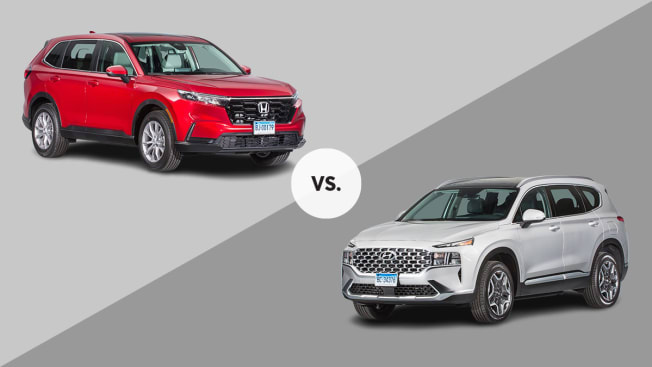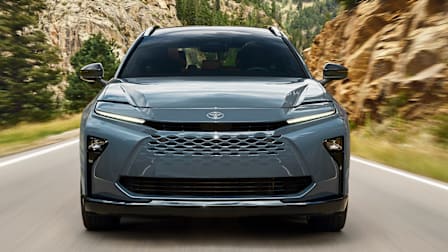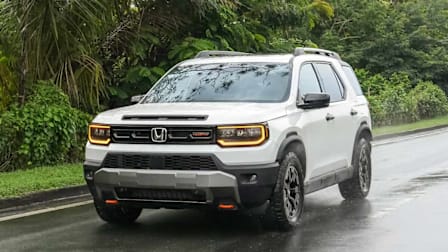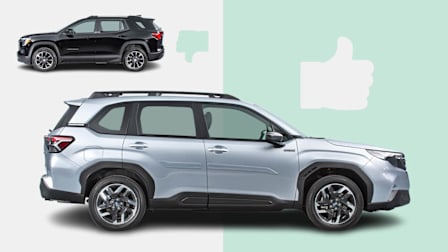Face-Off: Honda CR-V vs. Hyundai Santa Fe
These SUVs live in different categories but compete well with each other

SUV shoppers have more choices than ever before. Take, for example, the Honda CR-V and Hyundai Santa Fe. Technically, the CR-V is a compact SUV, while the Santa Fe is considered a midsized SUV. But with its 2023 redesign the CR-V has grown in size, making it one of the largest, roomiest models in its class. In fact, while the last CR-V was 6 inches shorter than the Santa Fe, the new model is just 3 inches shorter.
Each of these SUVs has room for five adults, and they’re available with either a turbocharged four-cylinder engine or a gas-electric hybrid powertrain and front- or all-wheel drive. They also come with a number of standard advanced safety systems.
Both have agile handling thanks to their responsive steering and restrained body lean. They’re maneuverable and nimble to drive, although neither will be confused with the sportier Ford Edge and Escape or the Mazda CX-50.




















